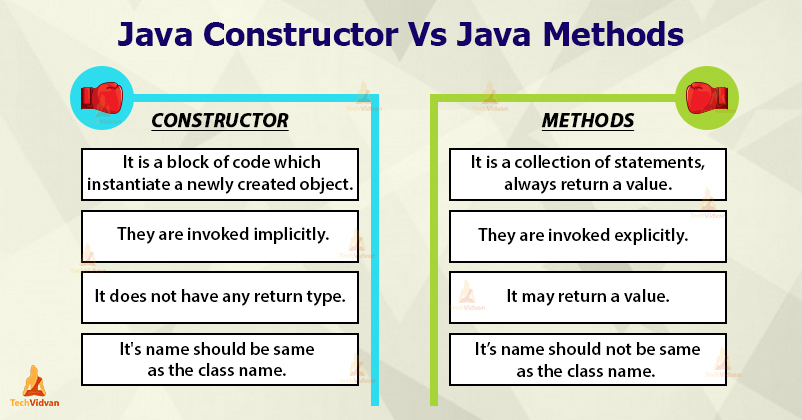
- #Java this constructor update#
- #Java this constructor software#
- #Java this constructor code#
- #Java this constructor free#
#Java this constructor code#
I tested this code and it works in B4J but not in B4A. If the programmer does not supply a constructor for an instantiable class, Java compiler inserts. Underneath, the compiler creates a corresponding canonical constructor with all the declared fields. 1 Hello everyone, I would like to use OutputStream. Recent versions of Java come with concise syntax for declaring records: record Mapping(String from, String to) Let's see how compact constructors can help us write more idiomatic code. Yet, while we all know that they provide getters, equals, hashCode, and toString for free, there is one feature that still feels a bit unknown. Introduced in early 2020 (with version 14) have already been adopted in many projects and organizations. This example demonstrates how you can limit the number of class instances by declaring a constructor private.Java records should be no longer considered as a "new concept". Java: this () constructor call (with examples) When you have multiple constructors, one constructor can call this () to invoke another constructor.
#Java this constructor software#
In-Demand Software Development SkillsĮxample 2: Private Constructor in Java to limit the number of class instances. This is an example of a Private constructor using a Singleton class. NewTestClass newObject= newTestClass.testObject() (“This is an example of a Private constructor using a Singleton class. This method ensures that only one object is created at a time Private Constructor can be accessed within the class

Java program for a singleton class implementation
#Java this constructor free#
Our learners also read: Free java course!Įxample 2: The following example demonstrates how a private constructor in Java ensures that no more than one object is created at a time. This observation demonstrates that both instance1 and instance 2 refer to the same object. The delegation behavior of super (.) and this (. When the object is created, Java calls the constructor first.
#Java this constructor update#
In the above program, the value of instance 2 automatically gets updated when we update the instance1 object value. This is a method you can use to set initial values for field variables. Instance 2 created has the following value = 46 A constructor in Java is a block of code similar to a method thats called when an instance of an object is created. Output Instance 1 created has the following value = 46 As Keppil said in the comments, this is a keyword. Because it is the constructor that would be invoked with this (x, y, width, height) and that would cause an infinite recursive loop. (“Instance 2 created has the following value = ” + instance2.a) 1 Answer Sorted by: 5 Is there a reason that the third constructor does not simply utilize this (x,y,width,height). (“Instance 1 created has the following value = ” + instance1.a) NewTestClass instance2 = newTestClass.displayInstance() In Java, this is a reference variable that refers to the current object on which the method or constructor is being invoked. displaying the instance of the singleton class by calling the public method NewTestClass instance1 = newTestClass.displayInstance()

*Call this method to access these instances from outside the class.

Constructors are called at the time of object. *displayInstance() is a public method that we will use to create instance. And that is what makes is different from a method and is called as Constructor which is helping the compiler to create a java object. Constructors in Java are special types of methods that are used to initialize the objects of the class. Static public newTestClass displayInstance() The following program illustrates when constructors. You can use the singleton class in networking and database connectivity concepts.Įxample 1: The following example demonstrates how a private constructor in Java limits the number of objects in a singleton class. In a class hierarchy, constructors are called in order of derivation, from superclass to subclass.

It restricts the class instances within the declared class so that no class instance can be created outside the declared class. A private constructor in Java ensures that only one object is created at a time. A singleton class is a class in Java that limits the number of objects of the declared class to one. A Constructor is a member function which has the same name as its class and is used to initialize the object of that class type with the. The default constructor in Java initializes the data members of the class to their default values such as 0 for int, 0.0 for double etc. The private constructor in Java is used to create a singleton class. Check Out upGrad Advanced Certification in DevOps Singleton Class


 0 kommentar(er)
0 kommentar(er)
